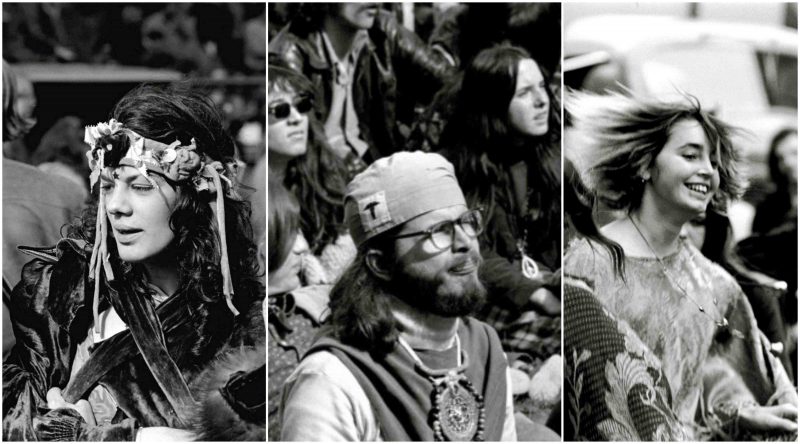The mainstream media’s coverage of hippie life in the Haight-Ashbury drew the attention of youth from all over America. Hunter S. Thompson labeled the district “Hashbury” in The New York Times Magazine, and the activities in the area were reported almost daily.
The Haight-Ashbury district was sought out by hippies to constitute a community based upon counterculture ideals, drugs, and music.
This neighborhood offered a concentrated gathering spot for hippies to create a social experiment that would soon spread throughout the nation.
All photos by Dennis L. Maness Summer of Love Collection, San Francisco History Center, San Francisco Public Library
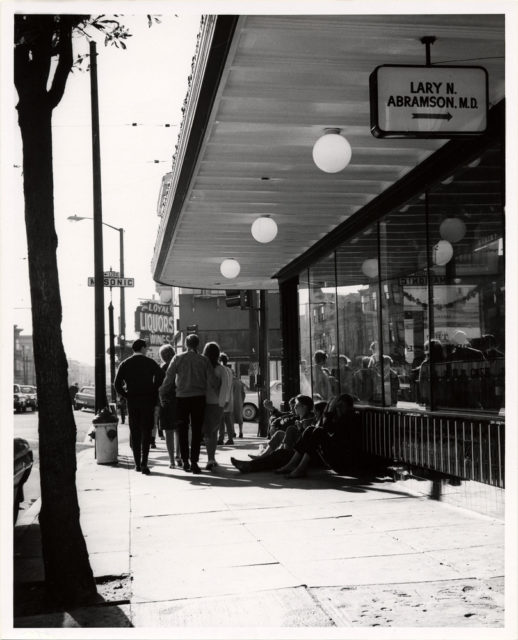
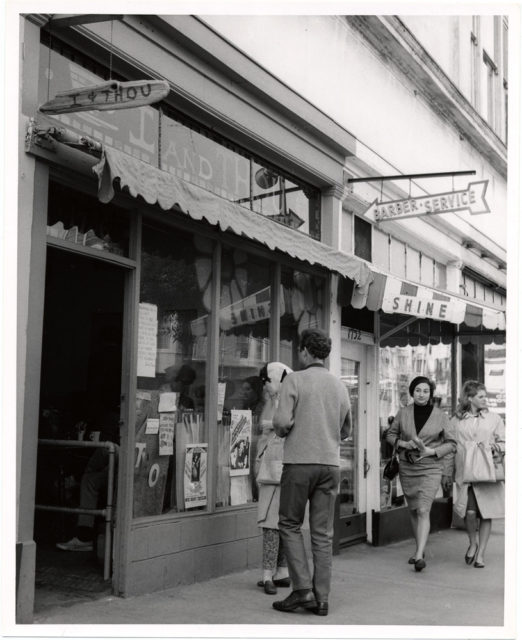
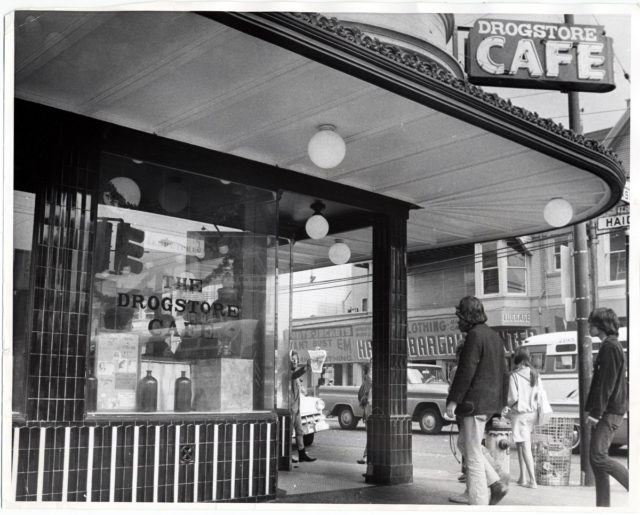
The opening of the Psychedelic Shop on January 3, 1966 offered hippies a spot to purchase marijuana and LSD, which was essential to hippie life in Haight-Ashbury.
With the Psychedelic Shop located in the heart of Haight-Ashbury, the entire hippie community had easy access to drugs, which was perceived as a community unifier. The neighborhood’s fame reached its peak as it became the haven for a number of the top psychedelic rock performers and groups of the time.
Acts such as Jefferson Airplane, the Grateful Dead, and Janis Joplin all lived a short distance from the intersection. They not only immortalized the scene in song, but also knew many within the community as friends and family.
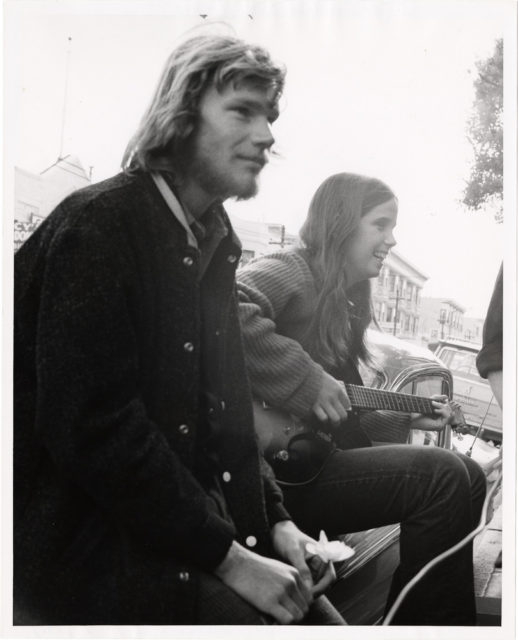
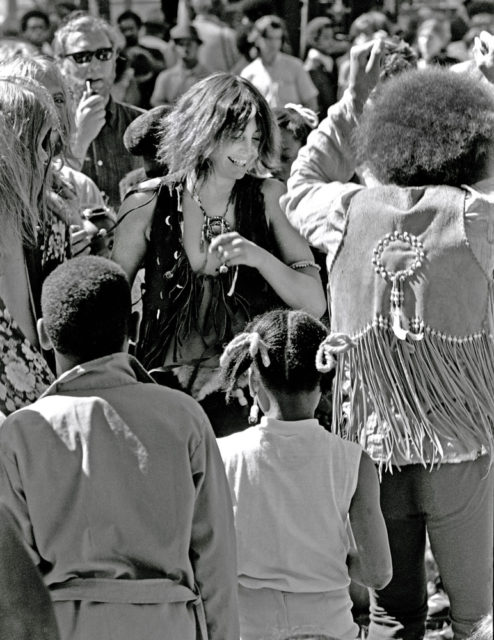
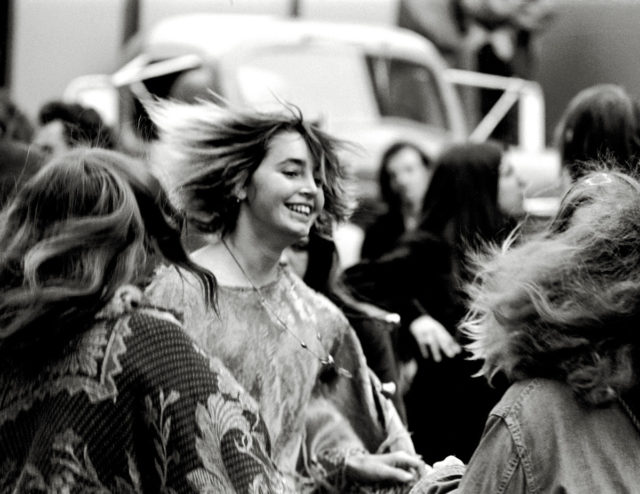
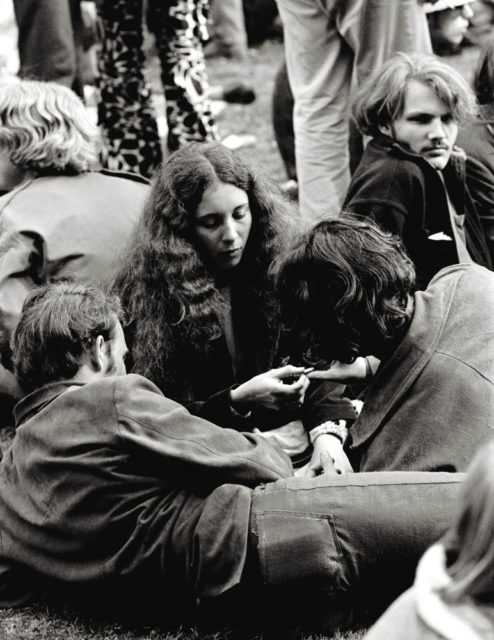
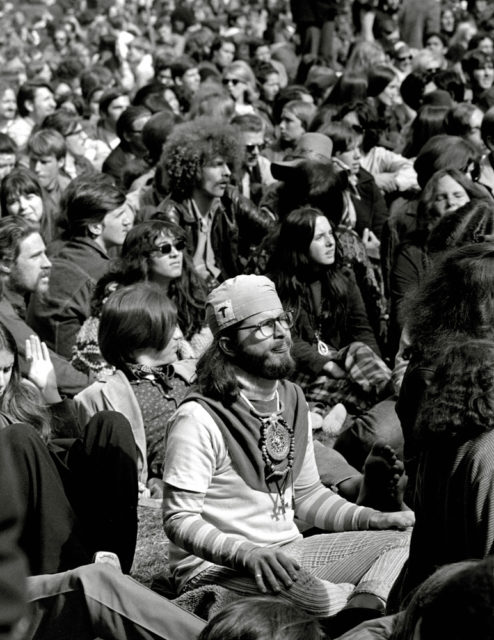
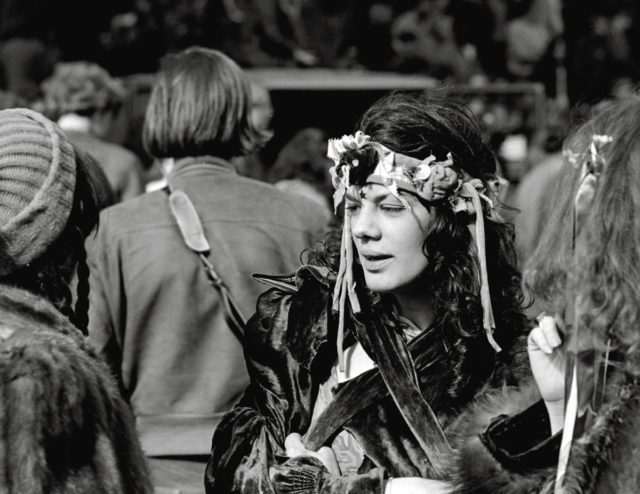
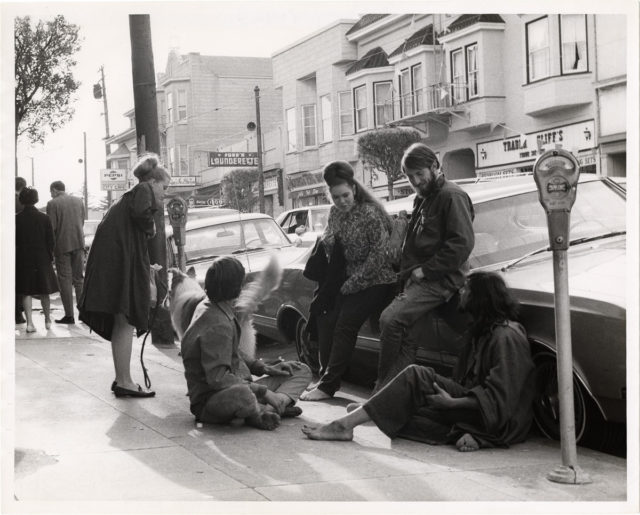
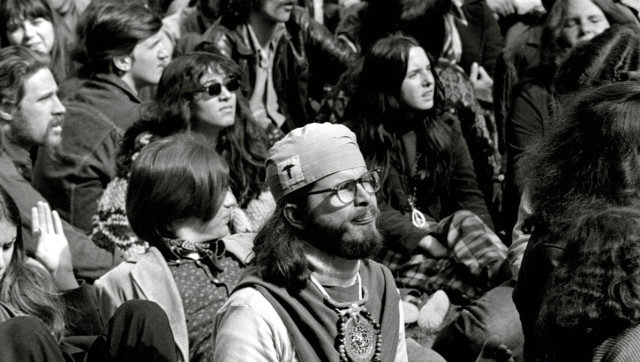
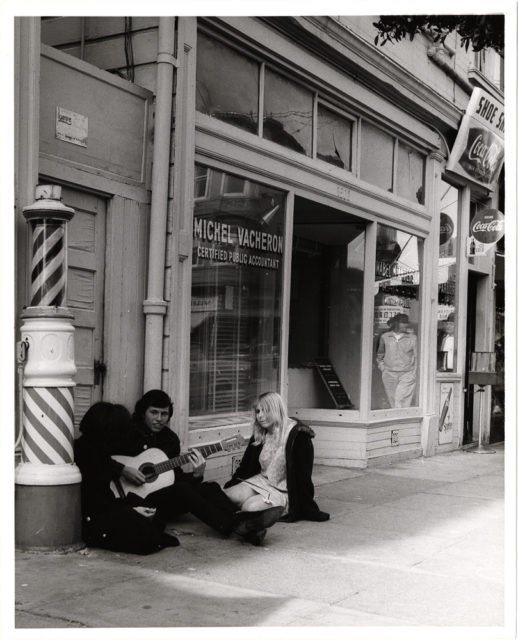
The first ever head shop, Ron and Jay Thelin’s Psychedelic Shop, opened on Haight Street in January 1966. Along with businesses like the coffee shop the Blue Unicorn, the Psychedelic Shop quickly became one of the unofficial community centers for the growing numbers of freaks, heads, and hippies migrating to the neighborhood in 1966-67.
Another well-known neighborhood presence was the Diggers, a local “community anarchist” group known for its street theater, formed in the mid to late 1960s.
The Diggers believed in a free society and the good in human nature. To express their belief, they established a free store, gave out free meals daily, and built a free medical clinic, which was the first of its kind, all of which functioned off of volunteers and donations.
The Diggers were strongly opposed to a capitalistic society (Hill 69); they felt that by eliminating the need for money, people would be free to examine their own personal values, which would provoke people to change the way they lived to better suit their character, and thus lead a happier life.
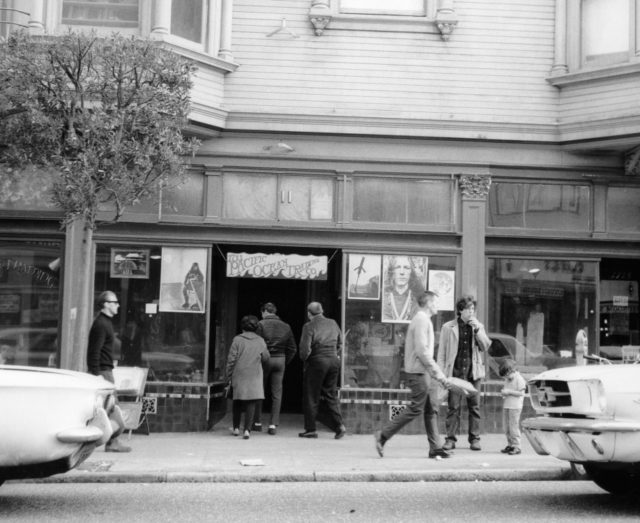
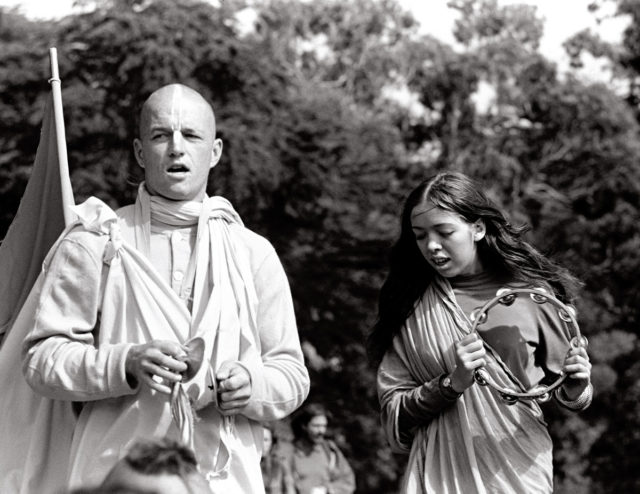
During the “Summer of Love,” psychedelic rock music was entering the mainstream, receiving more and more commercial radio airplay. The Scott McKenzie song “San Francisco (Be Sure to Wear Flowers in Your Hair),” written by John Phillips of The Mamas & the Papas, became a hit single in 1967.
The Monterey Pop Festival in June further cemented the status of psychedelic music as a part of mainstream culture and elevated local Haight bands such as the Grateful Dead, Big Brother and the Holding Company, and Jefferson Airplane to national stardom. A July 7, 1967, Time magazine cover story on “The Hippies: Philosophy of a Subculture,” an August CBS News television report on “The Hippie Temptation” and other major media interest in the hippie subculture exposed the Haight-Ashbury district to enormous national attention and popularized the counterculture movement across the country and around the world.
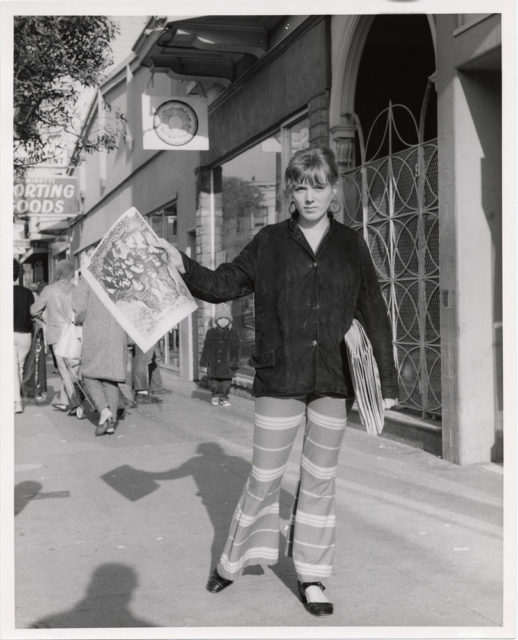
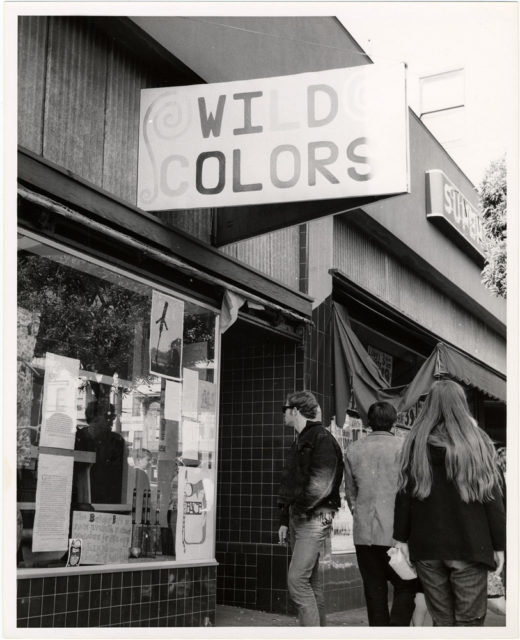
The Summer of Love attracted a wide range of people of various ages: teenagers and college students drawn by their peers and the allure of joining a cultural utopia; middle-class vacationers; and even partying military personnel from bases within driving distance.
The Haight-Ashbury could not accommodate this rapid influx of people, and the neighborhood scene quickly deteriorated. Overcrowding, homelessness, hunger, drug problems, and crime afflicted the neighborhood. Many people simply left in the fall to resume their college studies. On October 6, 1967, those remaining in the Haight staged a mock funeral, “The Death of the Hippie” ceremony.
